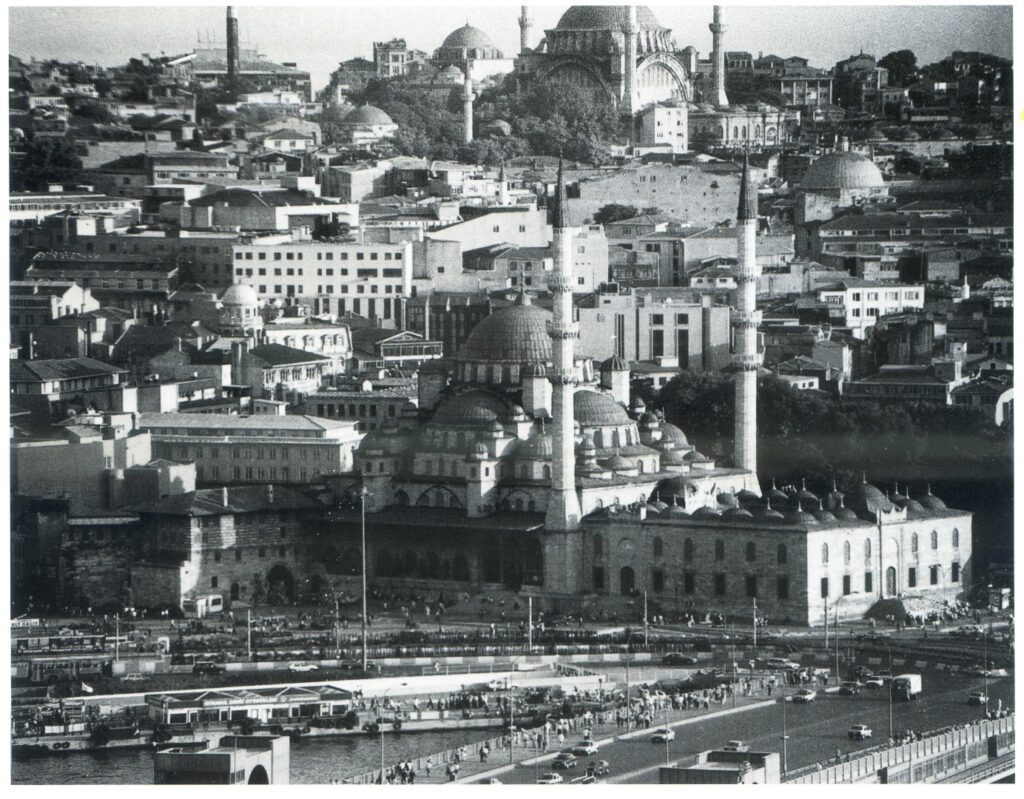

© Copyright photos by Levent Ağaoğlu
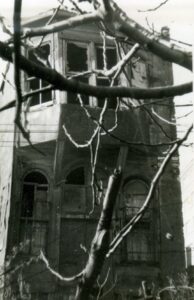
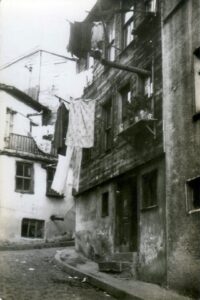
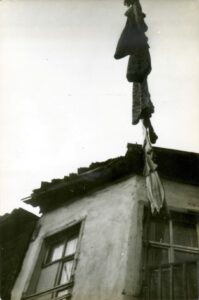
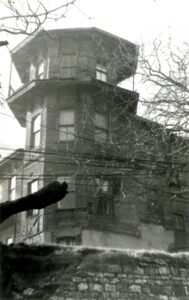
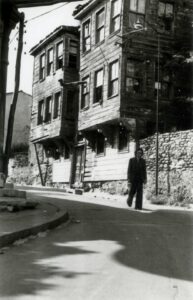
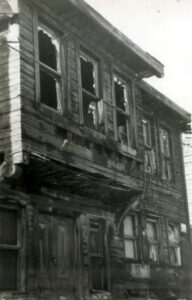
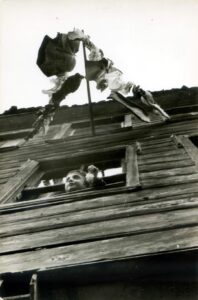
Cover Photo. Wooden Trojan Horse. Canakkale 23 April 1975 Wednesday
© Copyright photos by Levent Ağaoğlu
Wooden Trojan Horse at the entrance to the Archaeological Site of Troy. Fixed to the ground with ropes. Entrance windows have been made in its body. Who knows if it continues to be used? Later, an aesthetically stylized wooden model will be used in the Trojan Movie shot in the 2000s. Helen, Paris, Homer writings and Homer figure on the wall of the entrance building. Rug samples and postcards. Izmir Trip Canakkale 23 April 1975 Wednesday Wooden Trojan Horse
Truva Örenyeri girişindeki tahtadan Truva Atı. Halatlarla yere sabitlenmiş. Gövdesinde içine giriş pencereleri yapılmış. Kimbilir kullanılmaya devam ediyor mu acaba? Daha sonra 2000’li yıllarda çekilen Truva Filminde estetik stilize edilmiş ahşap bir model kullanılacak. Giriş binası duvarında Helen, Paris, Homer yazıları ve Homer figürü. Kilim örnekleri ve kartpostallar. İzmir Gezisi Çanakkale 23 Nisan 1975 Çarşamba Tahta Truva Atı
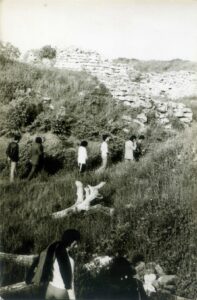
We are in the ruins of Troy. Are we aware that under the bushes we walk, there are layers of settlement up to the Hittites. Who came and who passed from Troy on the edge of the Dardanelles. The Achaeans, who came from the Greek mainland from the west, attacked first, uniting all the Anatolian peoples. Finally, all Anatolia and Rumelia united against those who came from the west with the most modern and majestic warships, and they went to the bottom of the sea. Many of the visible stone walls are waiting to be excavated underground. Wednesday, April 23, 1975
Truva harabelerinin içindeyiz. Yürüdüğümüz çalılıkların altında kat kat Hititlere kadar yerleşme tabakalarının olduğunun farkında mıyız. Çanakkale boğazının kenarındaki Truva’dan kimler geldi kimler geçti. İlk önce batıdan Yunan anakarasından gelen Akalar saldırdı, tüm Anadolu halkları birleşti. En son gene batıdan en modern ve heybetli savaş gemileri ile gelenlere karşı tüm Anadolu, Rumeli birleşti, denizin dibini boyladılar. Göze görünen taş duvarların niceleri yer altında kazılarak gün yüzüne çıkarılmayı bekliyor. 23 Nisan 1975. Çarşamba.
© Copyright photos by Levent Ağaoğlu
A sad double-domed mosque, which was built by Aydınoğlu İsa Bey in 1375 by Architect Şamlı Ali, on the slope of the plain, later abandoned to solitude, and its minaret was destroyed. It shared the same fate with the ruins of Ephesus. Alluvial fertile plains around, mowed lands, majestic poplar trees. Isa Bey Mosque Selcuk April 1975 Izmir
Aydınoğlu İsa bey tarafından 1375 yılında Mimar Şamlı Ali’ye yaptırılmış çift kubbeli, ovanın yamacında, sonradan yalnızlığa terkedilmiş, minaresi yıkıma uğramış mahzun bir cami. Efes harabeleri ile aynı kaderi paylaşmış. Etrafta alüvyon bereketli ovada ekilen biçilen topraklar, heybetli kavak ağaçları. İsa Bey Camii Selçuk Nisan 1975 İzmir
Cover Photo, Ephesus Road
© Copyright photos by Levent Ağaoğlu
The ancient road to Ephesus Harbor. The splendor and time-resisting permanence of marble. Who knows, the hills we see in front of us used to be the sea. The tops of the columns were adorned with statues. We seem to have entered a time warp with this photo. On the contrary, the mossy marbles did not stop time and did not reach today. We are cruising the path of one of the greatest ancient ports in history. Who knows what goods and people were transported from this port, wines, amphorae, olives, olive oil. Audiences coming and going to Ephesus Theatre. Ephesus Road April 1975
Efes Limanına giden antik yol. Mermerin ihtişam ve zamana direnen kalıcılığı. Karşıda gördüğümüz tepeler kimbilir eskiden denizdi. Sütunların üzerleri heykeller ile bezenmişti. Bu fotoğraf ile zaman tüneline girmiş gibiyiz. Yosun tutan mermerler aksine zamanı durdurmamış, bugünlere ulaşmamış. Tarihteki en büyük antik limanlardan birinin yolunu seyrediyoruz. Kimbilir hangi mallar ve insanlar taşındı bu limandan, şaraplar, amforalar, zeytinler, zeytinyağlar. Efes Tiyatrosuna gelen giden seyirciler. Efes Yolu Nisan 1975
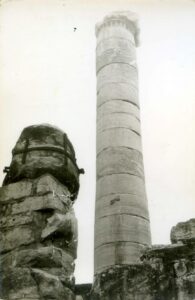
Who knows how an attractive God, Goddess statue adorned this column reaching to the sky? Didim Temple Izmir Trip April 1975
Göğe uzanan bu sütunu nasıl da alımlı bir Tanrı, Tanrıça heykeli süslüyordu kimbilir? Didim Tapınağı İzmir Gezisi Nisan 1975
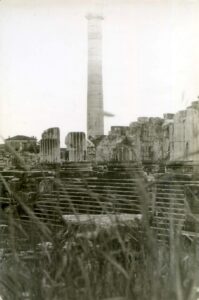
While the three fluted columns could only survive with their roots, the ring-ring column stands upright. 2700 years old open air museum. A typical Turkey landscape. The rings at the bottom of the grooved marble columns are also decorated with ornaments. One thinks, “Is the marble strong enough to withstand?” The uninterrupted struggle and determination of the people of my country for thousands of years. A jewel of marble stone, hidden behind the grass. Engraving their writings on granite stones, it is a divine sight that the Göktürks, who reached the Aegean coasts from the Silk Roads, were accustomed to and not alienated. Didim Temple Apollon Cult Izmir Trip April 1975
Üç yivli sütun ancak kökleri ile ayakta kalabilmiş iken, halka halka sütun dimdik ayakta. 2700 yıllık açık hava müzesi. Tipik bir Türkiye manzarası. Yivli mermer sütunların diplerindeki halkalar da bezemelerle işlenmiş. “Mermere kuvvet mi dayanır” diye düşünüyor insan ama dayanmış. Yurdumun insanının binlerce yıldır süregelen kesintisiz mücadele gücü ve azmi. Otların arkasına saklanmış mermerden, taştan bir mücevher. Yazılarını granit taşlara nakşede nakşede İpekyollarından Ege kıyılarına ulaşan GökTürklerin alışık oldukları, yabancılamadıkları ilahi bir manzara. Didim Apollon Tapınağı İzmir Gezisi Nisan 1975
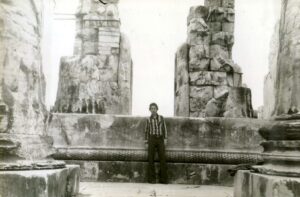
I wonder which meanings were being carried out by herringbone decorations, huge columns, marbles. A magnificent temple from the treasury of Turkey, the land of people who have refined their souls with their beliefs. Cut stones. The troubles of the people of the time, their search for a cure, their dreams, their sorrow, their gloom, showed themselves as lines, ripples and crevices on the stones of the temple. Didim Temple Friday 25 April 1975 Izmir
Ne anlamlar taşımaktaydı acaba balıksırtı süslemeler, devasa sütunlar, mermerler. İnançları ile ruhlarını inceltmiş insanların ülkesi Türkiye hazinesinden görkemli bir tapınak. Kesme kesme taşlar. Zamane insanlarının dertleri, derman arayışları, hayalleri, gam, kasavetleri, tapınağın taşlarında çizgiler, dalgalanmalar, yarıklar olarak kendini göstermiş. Didim Tapınağı 25 Nisan 1975, Cuma. İzmir
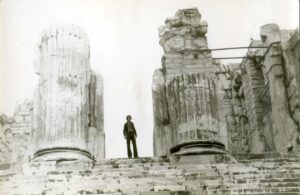
The root bases of the huge, thick-bodied temple columns have survived to the present day. It’s like a doorway to a time tunnel. The sounds of rites, offerings and hymns remained at the entrance of the door, which is reached by marble stairs. Contrary to the stones placed on top of each other in the Egyptian pyramids, what is observed here is always a subtle aesthetic on marble. Didim Temple Izmir April 1975
Kalın gövdeli devasa tapınak sütunlarının kök dipleri ayakta kalarak günümüze kadar uzanmış. Zaman tünelinin giriş kapısıdır sanki. Ayinler, adaklar, ilahilerin sesleri hep mermer merdivenlerden çıkılan kapının girişinde kalmışlar. Mısır piramitlerinde üstüste konulan taşların aksine burada gözetilen hep mermer üzerinde ince bir estetik. Didim Tapınağı İzmir Nisan 1975
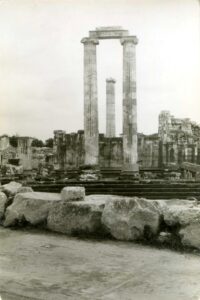
The main gathering place of the temple. The remaining main columns, column roots. Each side is full of pillars. Who knows what sacrifices were made to the Goddess Apollo. Its roof is covered with wood. There is no dome technology yet. Two master architects from the neighboring city of Miletus were going to build the Hagia Sophia Church temple in Istanbul 1200 years later, this time with a dome. Didim Temple Apollon Cult Izmir Trip April 1975
Tapınağın ana toplanma yeri. Geride kalan ana sütunlar, sütun kökleri. Her yan sütunmuş demek. Ne adaklar adandı kimbilir Tanrıça Apollon’a. Çatısı ahşap ile örtülü imiş. Henüz kubbe teknolojisi yok ortada. Komşu şehir Milet’li iki usta mimar ise 1200 yıl sonra İstanbul’da Ayasofya Kilise mabedini bu sefer kubbeli olarak inşa edeceklerdi. Didim Tapınağı Apollon Kültü İzmir Gezisi Nisan 1975
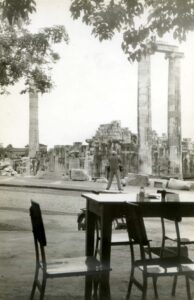
© Copyright photos by Levent Ağaoğlu
Ashtrays and salt shakers on the plain restaurant table, in front of it is the Didim Apollon Temple, a world masterpiece. 22 km away from Miletus, Capital of Philosophy of the World. The juxtaposition of philosophy and faith. Marble pillars rising to the sky by being cut into circles, twin marble pillars with grooves. Elder tourist took care of the best instance by crossing his legs with the camera team. Didim Temple Apollon Cult Izmir Trip April 1975
Sade lokanta masasında kül tablaları, tuzluklar, önünde ise bir dünya şaheseri Didim Apollon Tapınağı. 22 km ötesinde Dünya Felsefe Başkenti Milet. Felsefe ve inancın yanyanalığı. Halka halka kesilerek göğe yükselen mermer sütunlar, yivli ikiz mermer sütunlar. Turist amca kamera takımı ile bacaklarını çapraz yaparak pür dikkat kesilmiş. Didim Tapınağı Apollon Kültü İzmir Gezisi Nisan 1975
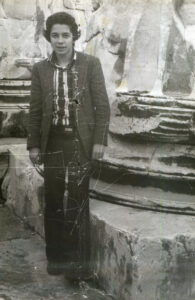
The gigantic columns of the Temple of Apollo in Didim have reached the present day from more than a thousand years. The curious eyes of the young man focused on what kind of future awaits him. Wisdom columns and stones probably have something to say about this. Shall we ask? Didim Temple Izmir Trip April 1975
Didim Apollon tapınağının devasa sütunları bini aşkın yılların ötesinden günümüze kadar uzanmış. Gencin meraklı bakışları ise nasıl bir geleceğin kendisini beklediğine yoğunlaşmış. Bilgelik sütunlarının, taşlarının da bu konudaki diyecekleri vardır herhalde. Sorsak mı acaba? Didim Tapınağı İzmir Gezisi, Nisan 1975
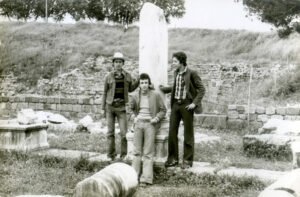
Young guide candidates are at the Bergama Asklepion. The joy of the discovery journey of the country’s treasures can be seen on the faces. Memories pile up frame by frame. Fertile lands where marble and stones turn into treasure. Wisdom in stone. Journey from the balbals of Asia to the curly-haired white marble statues of Asia Minor. Bergama Asklepion Saturday, April 26,1975
Genç rehber adayları Bergama Asklepionu’nda. Ülkenin hazinelerinin keşif yolculuğunun keyifi yüzlerden okunuyor. Hatıralar kare kare birikiyor. Mermer ve taşların hazineye dönüştüğü bereketli topraklar. Taşdaki bilgelikler. Asya’nın balballarından, Küçük Asya’nın kıvırcık saçlı beyaz mermer heykellerine yolculuk. Bergama Asklepion Cumartesi, 26 Nisan 1975
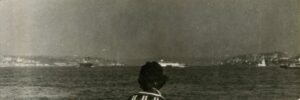
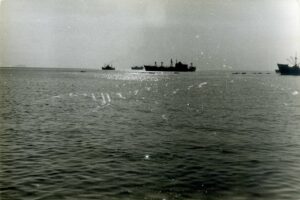
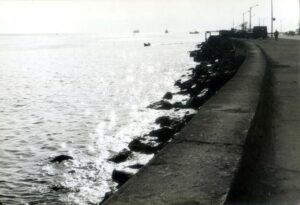
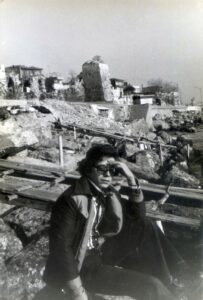
© Copyright photos by Levent Ağaoğlu
© Copyright photo by Levent Ağaoğlu
Cover Photo: Street From Fatih Park From Fire Brigade to Taş Mektep (Stone School) December 21, 1974
Auto spare parts shop, watch repair shop and artisan restaurant on the road to Fatih Mosque. Peddlers with black eyebrows and black mustach dressed in clean and white clothes. Cold toasts at the glass car stalls. Istanbul street delicacies, cold toasts. Fists are clenched due to the cold weather. Street From Fatih Park From Fire Brigade to Taş Mektep (Stone School 9 December 21, 1974
Fatih Camiine giden yol üzerinde oto yedek parça dükkanı, saat tamircisi ve esnaf lokantası. Temiz akça pakça giyimli karakaş, karabıyık seyyar satıcılar. Camekanlı araba tezgahlarında soğuk tostlar. İstanbul sokak lezzetleri. Hava soğuk mu soğuk, yumruklar soğuktan sımsıkı. Fatih Hava Şehitleri Parkından Taş Mektepe giden yol. 21 Aralık 1974
……………………………………………………………..
© Copyright photoS by Levent Ağaoğlu

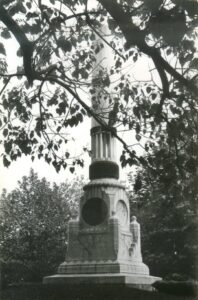
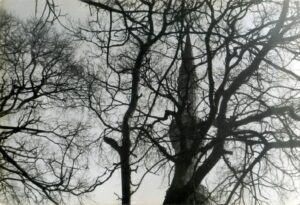
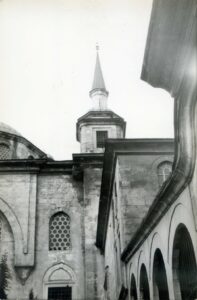
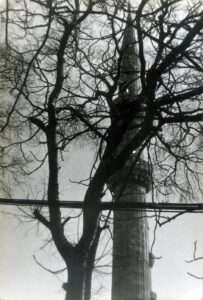
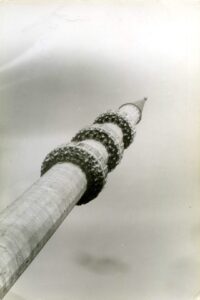
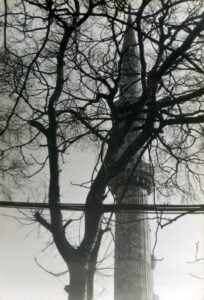
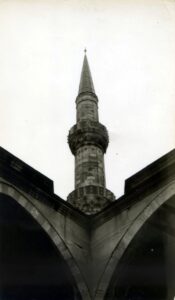
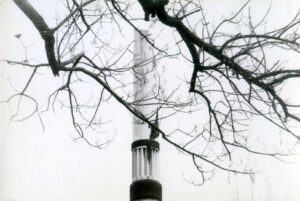
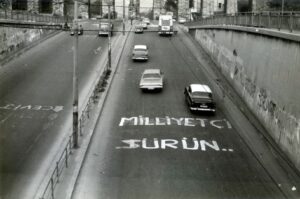
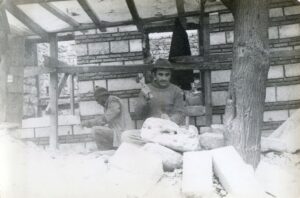
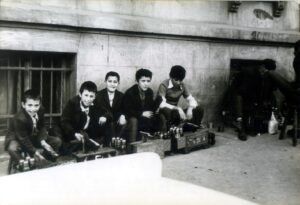
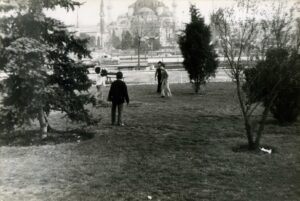
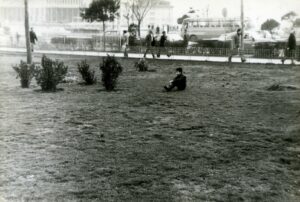
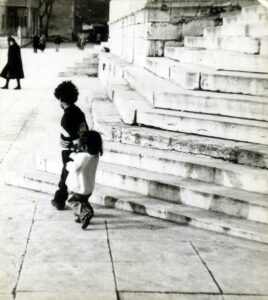
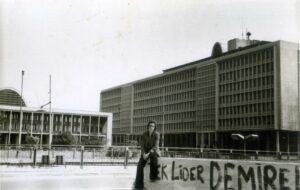
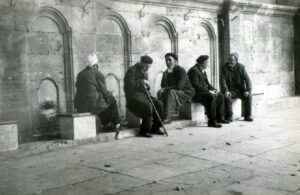
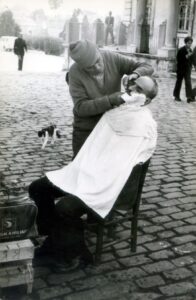
Cover: Blue Mosque 11 October 1975
© Copyright photos by Levent Ağaoğlu

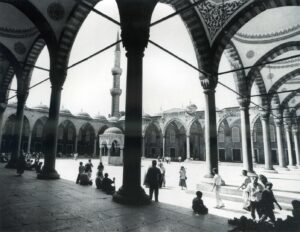
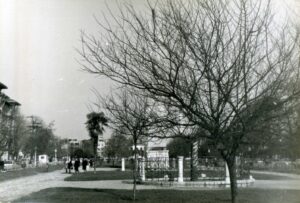
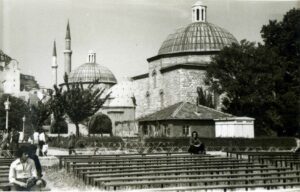
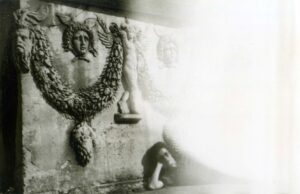
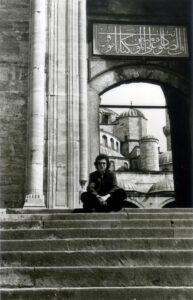
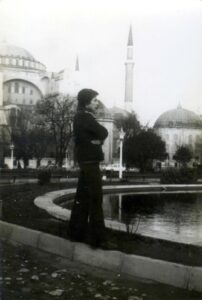
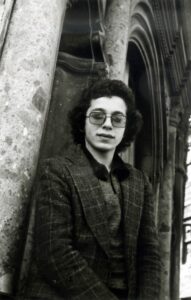
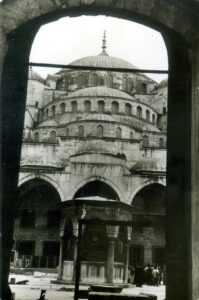
The magnificent Blue Mosque overlooking Hagia Sophia behind sycamore leaves is an aesthetic masterpiece. An unforgettable architectural masterpiece from centuries beyond, with a chestnut kebab vendor of 1970s car models at the entrance. Blue Mosque 11 October 1975